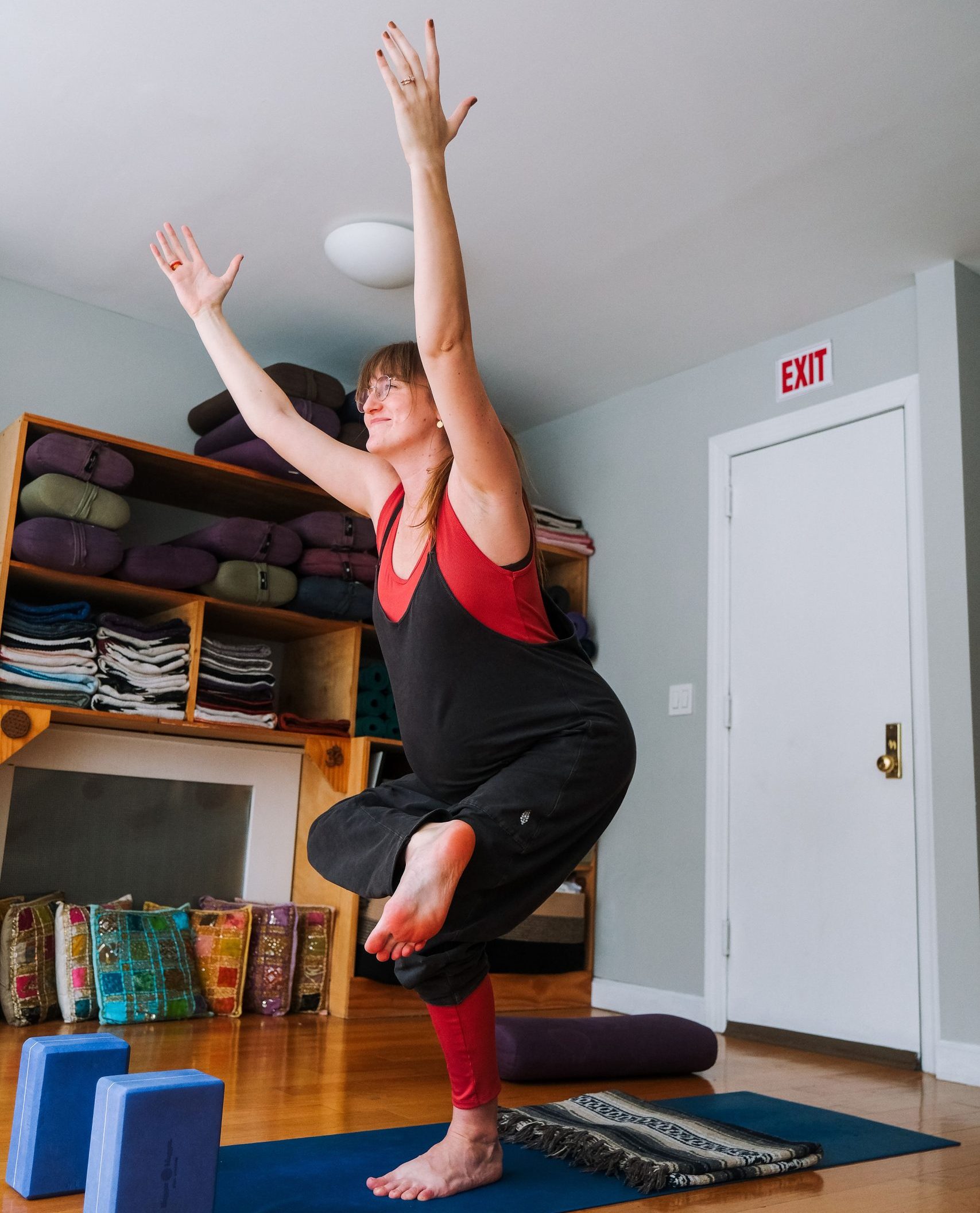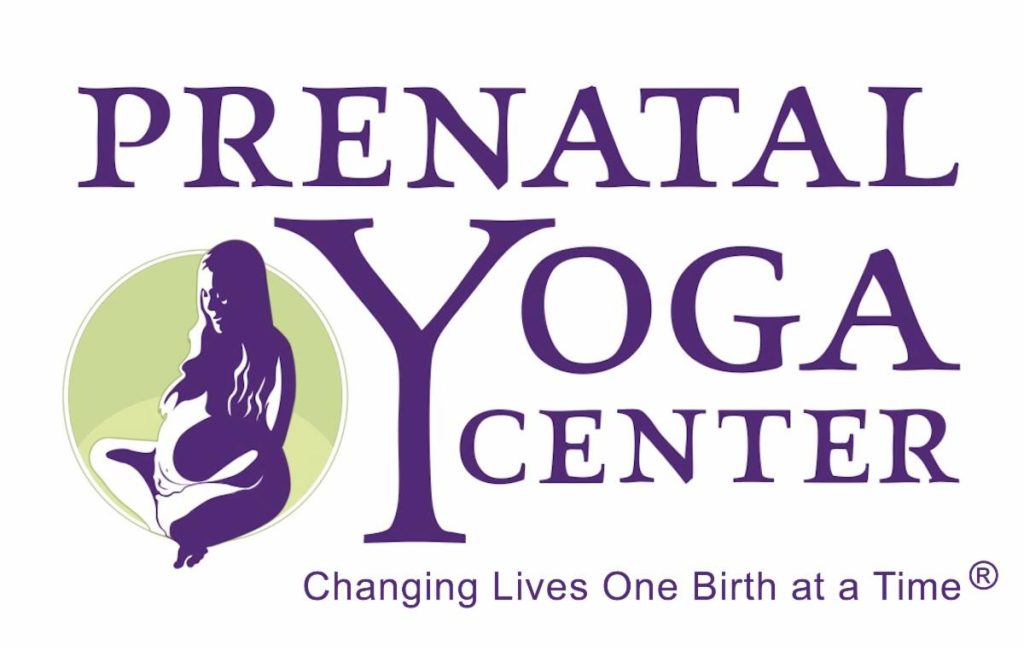Navigation
- Back Pain During Pregnancy
- Yoga: Addressing Prenatal Back Pain
- Yoga Methodology for Prenatal Back Pain
- Best Practices and Poses for Prenatal Back Pain
- Your Changing Body: Evolving Back Pain Throughout Pregnancy
- How We Can Address Your Prenatal Back Pain
- FAQs
Back Pain During Pregnancy
Here at the Prenatal Yoga Center, back pain is one of the most common complaints I hear in prenatal yoga class. But because each body and pregnancy varies, it doesn’t always manifest in the same way. Sometimes it presents as a general ache across the band of the lower back, while other times students express acute or constant pain in the left or right lower back (this is generally SI joint pain), and sometimes it’s midback or upper back and neck.
Fortunately, we are able to address these different aches and pains in prenatal yoga!
Yoga: Addressing Prenatal Back Pain
While yoga is a fantastic workout in itself—regardless of pregnancy—it is particularly beneficial for expecting individuals due to its gentle yet effective approach to back pain and overall wellness. Sometimes it’s the use of yoga’s lengthening and stretching that will alleviate back pain. Or perhaps it’s the alignment and deep breathing of yoga that will help with back pain. Other times, it’s even the strengthening and balancing of yoga that does the trick. As you can see, the many components of yoga can play an essential role in addressing the whole body, but especially the aches and pains of pregnancy.
Yoga Methodology for Prenatal Back Pain
Upper Back
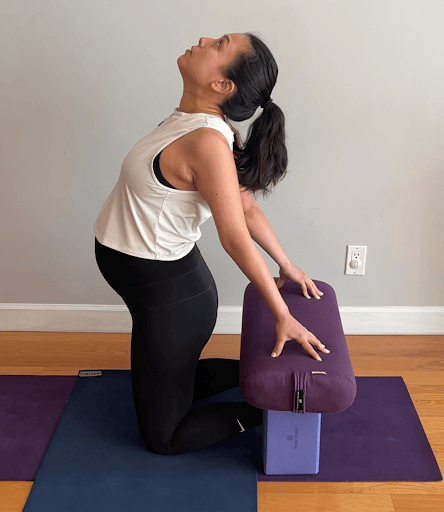
When it comes to the upper back, these muscles tend to get overly lengthened from the additional kyphosis (excessive outward curvature of the spine, causing hunching of the back) that happens as the shoulder rolls more forward. To address this, I incorporate scapula push ups into class and other upper back strengthening poses such as camel (see image above) and “seated updog” (see image below). These yoga poses focus on lifting and opening the chest via the engagement of the trapezius and upper back muscles.
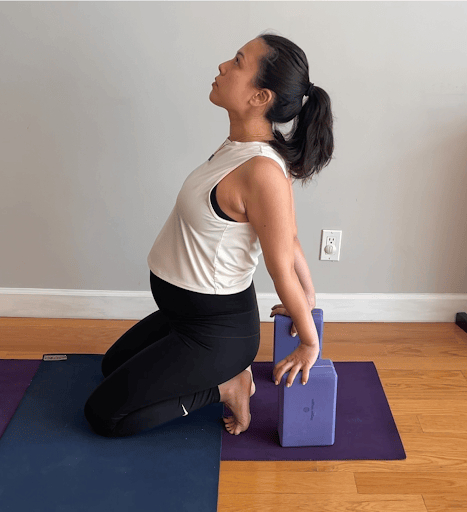
SI Joint Pain
When it comes to SI joint pain (sacroiliac joints, located in the pelvis), we look at how to create better balance in the pelvis and focus on strengthening the supporting muscles. This means we do a lot of hip, glute, and hamstring strengthening poses. The following are quite effective at addressing SI joint pain:
- Dynamic squats
- Utkatasana while squeezing a block between the thighs
- Downward dog with a block between the thighs
- Bridge pose with a block between the thighs
In Bridge pose, we like to focus on elongating the tailbone to the knee pits while isometrically drawing your heels towards your shoulders. This one gets a lot of bang for your buck since you are engaging the hamstrings, glutes, and adductors.
Best Practices and Poses for Prenatal Back Pain
Here are some of my “go to” poses to address back pain that often get interwoven into the flow of class:
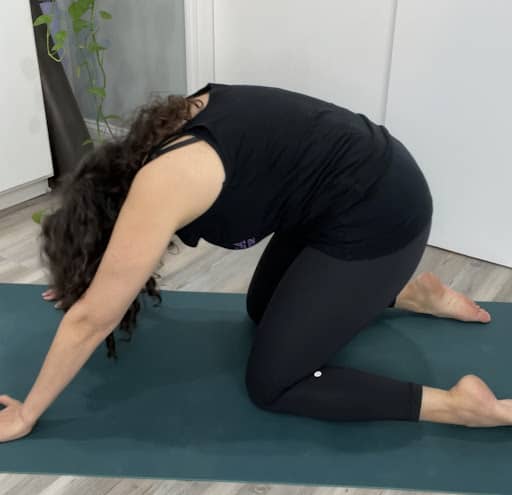
- Rocking Cat & Cow: This is a moving version of cat & cow that emphasizes the stretching of the lower back muscles. (See above image).
- Puppy Pose: This pose offers the opportunity to elongate the spinal muscles. The beauty of puppy pose is that it doesn’t require the same shoulder opening as downward dog, and puts very little weight on the hands and wrists (a great option for people with carpal tunnel).
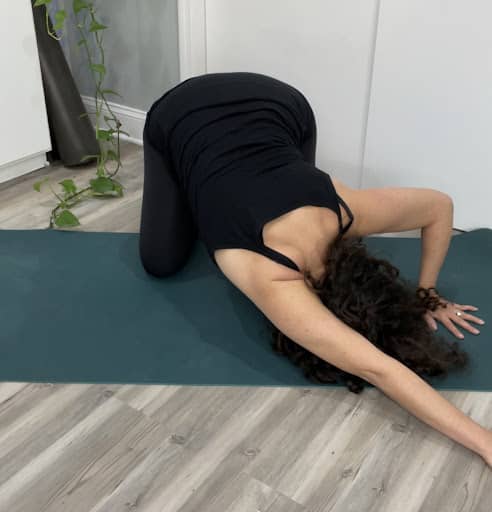
- Any Side Stretching Pose: Any side stretching pose releases the lower back muscles (specifically the QL or quadratus lumborum), and opens the side ribs and intercostal muscles. For those feeling very “full of baby,” this can offer some relief.
- Hip Drop: This also helps elongate and release the QL. Start by sitting with your left hip on a blanket or bolster, and your right hip floating. Lift your right hip up slightly and then let it release downward again (then repeat on the other side).
- Downward Facing Dog: Similar to puppy pose, it helps elongate the spine and spinal muscles.
- Hamstring Opening: You may be surprised to see hamstring stretches on a list of poses for back pain. When the hamstrings are tight, they can pull the pelvis into a more posterior tilt and limit pelvic mobility, leading to overly worked QL muscles.
- Puppy Pose with Side Stretch (see above image).
- Eagle Arms
- Thread the Needle
- 360 Breathing
- Chest Opening Poses (like Camel or Cactus Arms)
- Hip Strengtheners (check out this video for Hip Strengthener poses: Hip Strengtheners)
- “Deb’s Pyramid”: This is a pose I created, which is a mash-up of a wide legged forward fold with a downward dog upper body. (See image below).
- Figure 4 Pose: A class favorite for those with SI (sacroiliac joint pain), this pose stretches the piriformis which can help alleviate some of that discomfort.
See these poses in action by watching this video here: Lower Back Pain
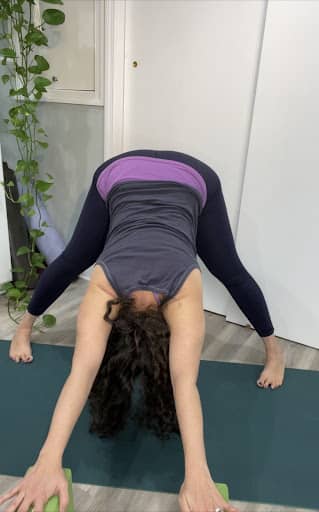
Your Changing Body: Evolving Back Pain Throughout Pregnancy
As pregnancy progresses, the curves of the spine get more exaggerated, which results in the pelvis falling into a more anterior tilt, the upper back rounding more, and the cervical spine (the neck) extending more. All of this can result in certain muscles getting shorter while other muscles are overly lengthening and weakening.
Lower, Mid, and Upper Back
During pregnancy, the lower back muscles tend to shorten and tighten. So we address that with poses that help to bring length back to the lower back. Lots of rocking cat poses, side stretches to release a tight QL muscle, and downward facing dog.
For the mid back, we work on strengthening these over-lengthened muscles with scapula push ups. But we also work to find thoracic rib mobility with poses like thread the needle, upper back twists, and eagle arms. For mid back, we also work on chest opening, since tight pectoral muscles can also contribute to the upper back rounding.
A tight upper back can also lead to neck pain, so we like to work on better alignment and good breathing. Typically the pregnant body shifts weight more forward, so we start by balancing the weight on all 4 corners of the feet, then move back the thigh bones that are often pushed forward. Then we align the pelvis. I often give the cue, “pubis up and tail down, not under.” Then continuing up the body, we try to stack the ribs over the pelvis and back the head up, which is often in a forward-head position.
Breathwork
Good breathing goes hand in hand with mindful alignment. This is where I introduce what’s called 360 Breathing, with a focus on breathing into the side and back ribs. The “360” refers to the 360 degrees of the rib cage. Most people are often stuck breathing high into their chest or they push their breath into their belly. But with the focus of breathing pushed to the base of the ribs and specifically into the back and side ribs, we can help promote diaphragmatic breathing and especially get more movement into the sticky mid/upper back.
How We Can Address Your Prenatal Back Pain
At Prenatal Yoga Center, we provide yoga classes for both pregnancy & postpartum, in-studio for students in NYC, and online to serve pregnant yogis around the world!
If you are interested in addressing your back pain during your pregnancy journey or learning more about how you and your growing family can receive support through your pregnancy, childbirth, and postpartum period, contact us or book a class, workshop, or event today!
FAQs
Can you do yoga on your back while pregnant?
The idea of not lying on your back comes from trying to avoid Vena Cava syndrome. This is when the weight of your baby can put pressure on the vena cava, restricting the blood flow to your heart. Most people feel nauseated, light headed, or generally unwell when this happens. This is your body letting you know you should move!
That being said, we want to consider fetal positioning. Long periods of time on your back can encourage baby to move more towards your spine. But for most people, by the time they hit the third trimester, it’s not very comfortable to be flat on your back anyway. So again, nature has a way of taking care of itself!
Additionally, in class, we are not usually flat on the back. When we do recline, it is either very momentary—like when moving into a pose like bridge pose—or if we are staying for a longer period of time, we create a 45-degree angle with blocks and bolsters, so the torso is more upright.
How can I stretch my lower back while pregnant?
Several poses are effective at stretching and releasing a tight lower back during pregnancy. A few of my favorites include rocking cat spine, puppy pose, downward facing dog, and side stretches.
Is downward dog safe for pregnancy?
Absolutely! Few other poses offer the opportunity to stretch and lengthen the excessive curves of the pregnant spine like Downward Facing Dog. I recommend not focusing on getting the legs straight and the heels down, but rather emphasizing the dual action of pushing the hands down and forward while actively drawing the outer hips back and up.
I also recommend stressing the ascending quality of the pose. For those with tightness in the hamstrings, glutes, and lower back, I would even go so far as to recommend lifting the heels and adding a slight bend of the knees to free the lower back. This will help take the focus away from opening the back of the legs (for which there are many other opportunities) and instead offer the pregnant person the chance to truly enjoy spine lengthening and relief from pregnancy-related back pain.
What classes do you recommend for back pain?
All of our prenatal yoga classes will address back pain! Because of the nature of yoga itself, you can find back pain relief through some of the most basic yoga poses and stretches.


